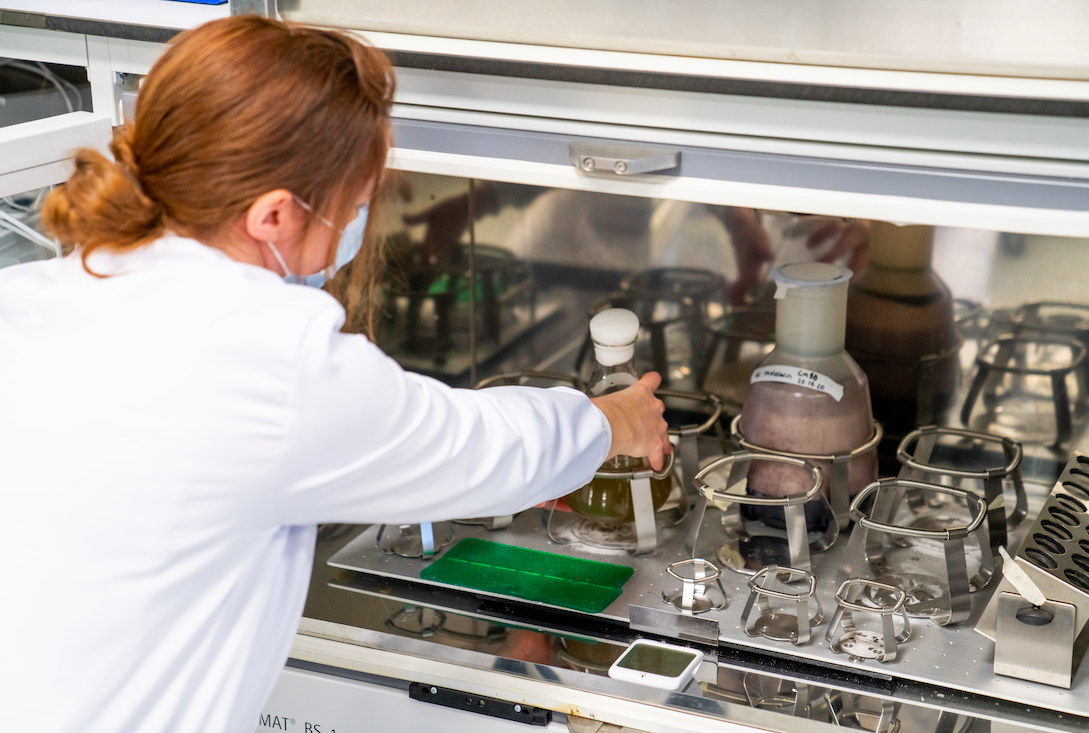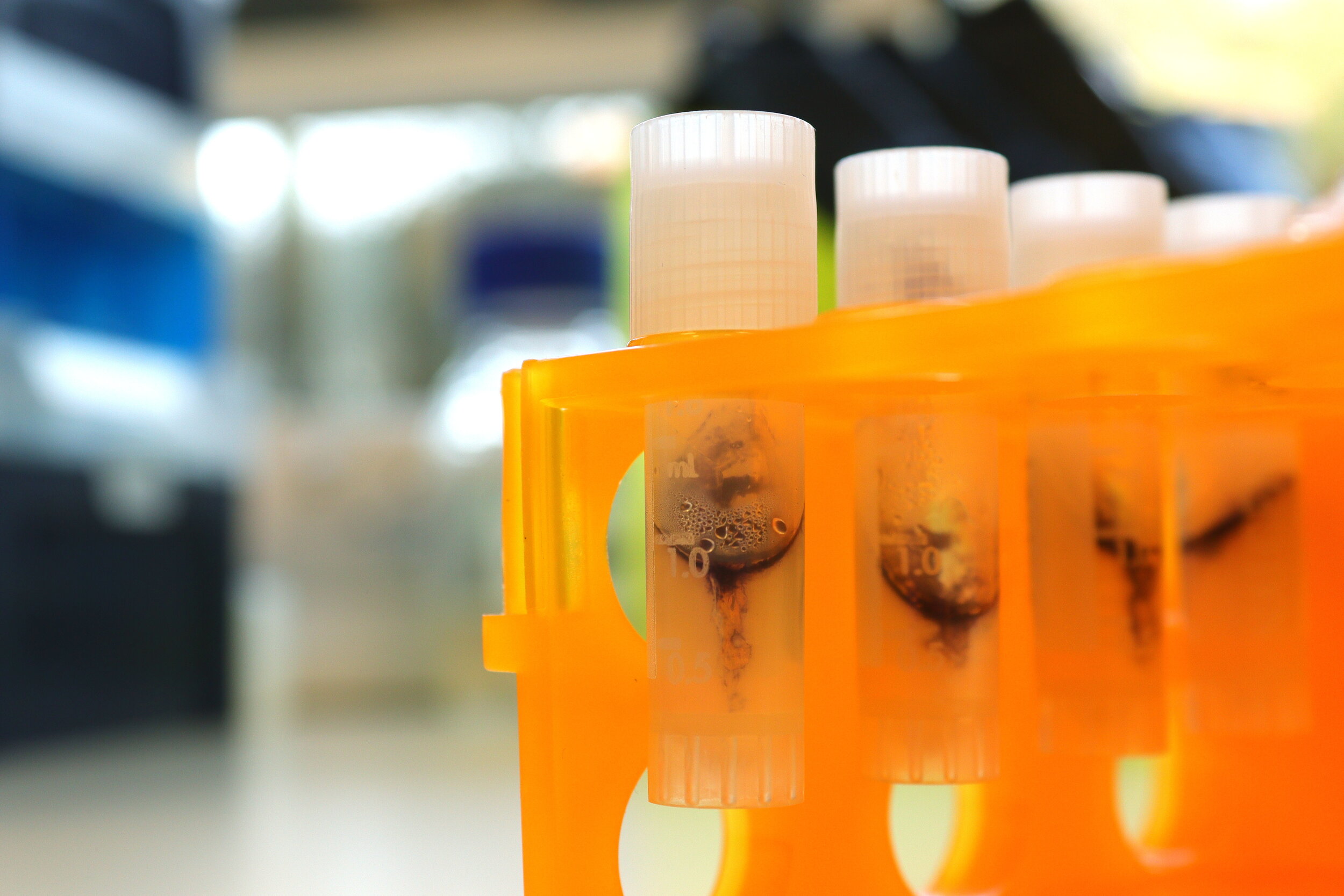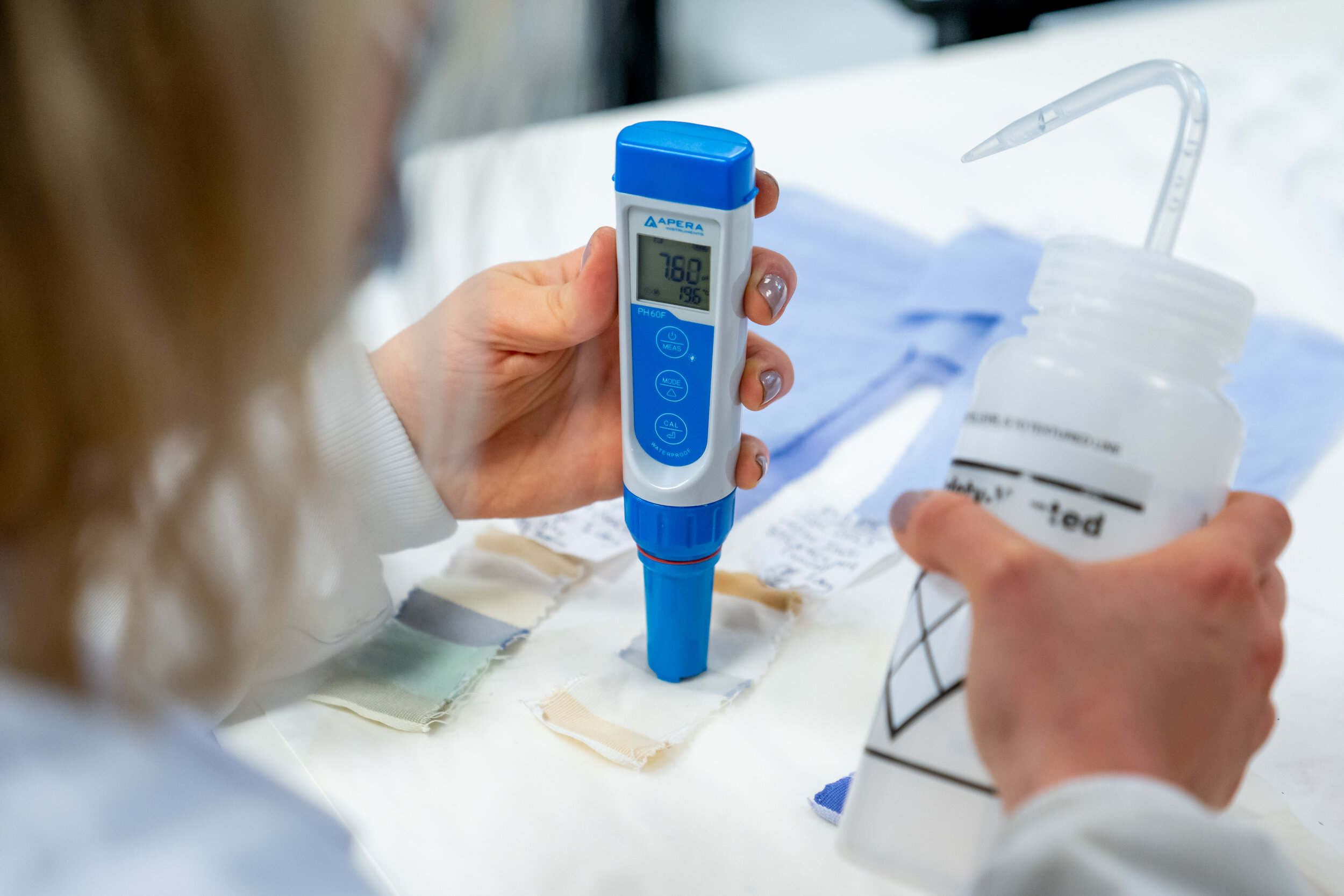Colorifix

The world’s first company to use a biological process to produce, deposit and fix pigments onto textiles.
Website: colorifix.com
Applications: Natural dyes
Country HQ: United Kingdom
Founded date: 2016
Business Model: B2B
YOUR JOURNEY TO FUNDING
Jim Ajioka—my co-founder—originally hired me in 2012 to work on a biosensor for looking at water quality. We were specifically looking at heavy metals, and in particular at arsenic, which is a big problem in South-East Asia. As part of the project, we were interacting with several stakeholders to understand the needs for the product and understand what else in the water was bothering them. So, we got a long list of chemicals and we went back home and did our homework, asking: where do these chemicals come from?
And, unfortunately, a lot of those went back to the textile industry. We looked at what chemicals were used in the processing and realised how big of an impact dyeing has on the environment. Our biosensor was based on the bacteria that would change colour to indicate when water was not safe to drink and we thought: wouldn’t it be great if we could get the bacteria to colour materials? In this way, instead of just monitoring the problem, we could solve it. That was essentially the birth of the concept of Colorifix.
“We looked at what chemicals were used in the processing and realised how big of an impact dyeing has on the environment”
We started off by looking at the IP position. We filed a patent for the technology and it got approved. So we started engaging with the textile and fashion industries and participated in the Fashion for Good program in 2016-17, and from that we started to understand the industry and how to best integrate our solution with current practices. In 2018 we successfully closed our financing round, and we just closed a second round of financing. Right now we are more than 27 people in the team.
THE TECHNOLOGY
Essentially what we have done is going one step back and many steps forward. For thousands of years people used natural colourants and pigments to dye things. With the advent of the chemical industry we moved away from those because of many reasons including consistency, performance, availability and cost. To give an example one of the most important dyes that we still use today is Carmine red, which was traditionally made from beetles. Now that in itself is a challenge because you need to farm beetles but those beetles only live on the island of Lanzarote, where 98% of Carmine red production comes from. So if you have a typhoon or a hurricane the supply chain can be disrupted for years. And that’s something that an industry of the scale of textiles can’t really tolerate.
So, synthetics provide you with that assurance of quality and availability, competitive cost and breadth of colour palette - in nature you have a lot of colours that you can’t really access because they don’t occur in the context where you can use them. As another example one of the first natural pigments that people studied genetically was in the eyes of fruit flies. There you have several pigments happening: red, purple, brown, yellow, gold, etc. But if you wanted to dye a t-shirt with those pigments you would have to get a billion flies, take out all of their eyes, do a solvent extraction, and then you would have enough pigments to dye a t-shirt. So it’s not really a readily usable pigment even though it exists in nature.
How does your technological solution overcome these obstacles in order to produce natural pigments?
What Colorifix is doing is taking these natural pigments and changing their context. So instead of extracting the colour from a living being in nature, we’re extracting the information of how the colour is made. And that’s all in the DNA. To give you an example, if I wanted to dye with the colour of a red parrot in the traditional way I would have to take all the feathers off a parrot, do the solvent extraction, do the pigment and then apply it.
“Instead of extracting the colour from a living being in nature, we’re extracting the information of how the colour is made”
What we are doing instead is taking one feather from a parrot, scraping some cells off the tail, and finding the message “make red” in the DNA, which we then put in our organisms. And they will make the same red the parrot makes, the same way the parrot makes it - starting from sugar and nitrogen and building all of the chemistry towards making that product. That means we can use natural pigments from any context. We then use our process that engineers organisms, which transfer the dye directly onto the textile.
What is your impact on the environmental performance of the whole dyeing process?
A lot of focus in recent years was about where dyes come from. Can we make the source of the dye more renewable and sustainable? But when you change the dye you’re still not massively changing the parameters of dyeing. So you can have better dyes but the dyeing itself is just as bad - you are still using huge amounts of water and adding all these other chemicals to make the dyeing process efficient, even if you are using a naturally-occurring pigment.
What we are trying to do is to replace how the dyeing process currently takes place. So, instead of adding mordants, fixatives, binders and linkers, we use the cells to transfer and fix the dyes onto the material. That means that we’re using the same equipment that the industry is using today, just replacing what goes into the equipment. That’s the real power of the technology. And this means we can dye with a lot less water. Our dyeing occurs at the minimum ratio that the machines can work at, in terms of how much pressure is put on the fibre. And we require less washes, because our process is very efficient. This means we are saving between 50% and 90% of water.
“We are using the same equipment that the industry is using today, just replacing what goes into the equipment”
Beyond that, we save on temperature, because dyeing normally takes place at very high temperatures for a very long period of time. Normally, you have to heat up 25 litres of water per kg of fabric between 65 degrees - for some special fabrics that are low-temperature - up to 130 degrees for polyester and nylon dyeing. We do our dyeing at 37 degrees, with only one brief temperature spike - five minutes in order to kill the micro-organisms. Given that ours is a GM process making a non-GM product, we need to make sure we eliminate any trace of biomass from a GMO. That is our process in a nutshell.
So, we're trying to solve a lot of the problems that were existing before with natural pigments. We're increasing the colour palette of natural pigments that are available and usable, including ones that—like the fruit flies—we wouldn't be able to touch in this industry. And we're trying to improve the dyeing process by using essentially the cells as biological auxiliaries to the dyeing process.
“We are trying to improve the dyeing process by using essentially the cells as biological auxiliaries to the dyeing process”
How many colours are you able to work with right now?
In December 2018, we had four and a half colours. At present we make 37 individual pigments. And obviously these can be mixed to make other colours as well. Not all of them can be mixed with each other, and not all of them are usable across all materials to the same standard. But they do work across a very, very wide range. And most of them are mixable with most of them. So we're just preparing the formulas and the rules for using the technology for the industry. And that's something we do together with our industrial partners.
You work with fashions brands from all over the world - how’s their reaction been towards your innovation?
I have to say that the fashion industry has been incredibly welcoming. When Jim and I set out to do this, we thought we were going to have a very big battle on convincing people that this is a good idea. We thought that the fact that it is a genetically-modified technology, with a synthetic biology base, people would see that as a marketing risk, even if it has environmental potential. But the response has been incredibly positive.
We engaged with over 80 brands so far, and there was only one brand saying ‘oh, it’s GM, we are not sure about that’. And, three months later, they changed their mind. It’s been a lot more positive than I expected. Brands care a lot more than the average consumer thinks. A lot of this is thanks to a new consumer mindset—I have to say—but I think the industry has paid it a lot more attention than we give it credit for. They are really trying - we see that through the direct and indirect support we are getting all across the supply chain, from brands, manufacturers and dye houses.
How does your products’ price compare to the current industry standards?
It’s all a matter of scale, really. It’s impossible to compete with a 700,000 tonnes-a-year industry—the synthetic pigment industry—when you are making a few kilos a day. Right now, we are in the premium space, probably around 50% more expensive than existing dyes. When we scale, and not very large actually, we will be able to compete, and eventually beat existing industry prices.
“When we scale, and not very large actually, we will be able to compete—and eventually beat—existing industry prices”
For manufacturing, we are relying on fairly mature technologies for fermentation. If you look at the beer industry—and how much of that is made every year—we are looking at something very similar to that. Except that instead of the product being alcohol, it is pigment. And it is not very expensive to make beers...The commodity will beat existing synthetic petrochemical prices, eventually. We’are actually doing very well on price given our stage - quite a lot of alternative technologies start with 10x or a greater multiplier. We are not anywhere near that.
FUTURE PLANS
Our priorities are quite clear. Number one is making sure that our customers are happy, and the technology is delivering to them what we said it would. We want to ensure maintaining the same quality standards we have achieved when we go up in scale, integrating and conforming our solution to the way the industry is working today, without interrupting their workflow and increasing their lead times. We also want to make sure that the adoption and training phases to get the technology out there become smooth and simple. At the moment, we are developing protocols of how to scale, and the training packages on how to train people, making sure information is passing across correctly and our training and implementation is done correctly and painlessly. This is needed to onboard a lot of people and help the industry change its impact.
VISION FOR DECADE OF ACTION
Our message is that we really need to learn from nature and apply its own technologies and tricks for how we make things. Making colour is something that nature has always done, yet rivers never run polluted because of the way nature put colour into things. Like for many other products that we make, there are incredible solutions that exist in nature. Nature is the teacher when it comes to sustainability. There are a lot of processes happening in nature that we can learn from and apply industrially to change the way we make things.
“Making colour is something that nature has always done, yet rivers never run polluted because of the way nature put colour into things”
The biggest concept that we can learn from nature is that choosing the right energy source and the right type of carbon makes all the difference. That’s why nature works on a sugar economy, basically - you make it from sunlight, it doesn’t pollute and it can fuel everything. That’s the direction that I see the industry starting to go towards, with the use of biotechnology and fermentation technologies, where you are feeding sugar to the process to make an end product. This is for biomaterial, finishing-agent or altering agent like we are making, but also drugs, pharmaceuticals and eventually even engines will have to work based on essentially a different and more sustainable carbon economy.
We have to continue with the message that’s been going around in the public and industry for the last 15-20 years: we need to change how we make things, we need to optimise and become efficient and less wasteful. This planet has a finite lifetime, and the way we make things is shortening it very dramatically. Everybody’s coming to the same conclusion. For this, we need concerted effort from consumers, manufacturers and regulators. It’s not enough to say ‘oh, it’s their problem’ - it’s everyone’s problem.
January 2021
A conversation between Orr Yarkoni & Emanuele Di Francesco







